The American sports tycoon who wants to build Yankee Stadium in Milan may have found his nemesis: Italian bureaucracy
As they peered through the smoke from lit flares, fans of the Italian soccer team AC Milan dancing beneath the towering Italian gothic cathedral in the city’s Piazza Duomo may have noticed a tanned 56-year-old American who didn’t quite look like he belonged.
Gerry Cardinale’s dark blue polo stood out amid the red and black striped jerseys the fans of the “rossoneri” wore—if they were wearing shirts at all—to celebrate the team’s title-clinching 3-0 victory against Sassuolo.
It was May 2022 and the public announcement had not yet gone out, but Cardinale, founder of the investment firm RedBird Capital, had just agreed to a $1.2 billion deal to buy the legendary football club. Cardinale, a Goldman Sachs veteran famous in American sports, entertainment, and media, had descended from the boardroom to experience firsthand what kind of party one of Italian soccer’s most beloved teams would put on the day of its first championship in 11 years. It was perhaps the last time Cardinale would walk the streets of Milan unrecognized.
Since then Cardinale has become a figure of fascination and controversy in the city and in Italian soccer. His plans for a shiny new stadium to replace AC Milan's venerable San Siro stadium have worried some—but many pundits and fans, despite their usual wariness of foreign owners, can’t help but concede that Cardinale's plans are the team's best hope for a return to its much-longed-for-glory days.
That’s certainly how Cardinale sees it. His investment firm, RedBird Capital, has lately become the go-to financer for the entrepreneurial adventures of Hollywood celebrities such as The Rock, Ryan Reynolds, and Ben Affleck, as well as sports superstars such as LeBron James. Prior to RedBird, Cardinale was best known for his big deals in sports, including forging a lucrative relationship with the New York Yankees and then-owner George Steinbrenner in the early 2000s at Goldman. Cardinale was key to coming up with the innovative idea to create the Yankees’ YES cable network and helped the team assemble the financing used to build the new Yankee Stadium.
So it stands to reason, perhaps, that at the center of Cardinale’s vision for Milan is a state-of-the-art 70,000-capacity stadium, complete with an entertainment district, team museum, hotels, theme park, and locker rooms featuring cryogenic pools, according to documents viewed by Fortune. The project, still in its early stages, would see Milan leave the beloved but rickety San Siro stadium for a new arena, with an estimated cost of $1 billion, in a suburb of the city—essentially, a Yankee Stadium in Milan.
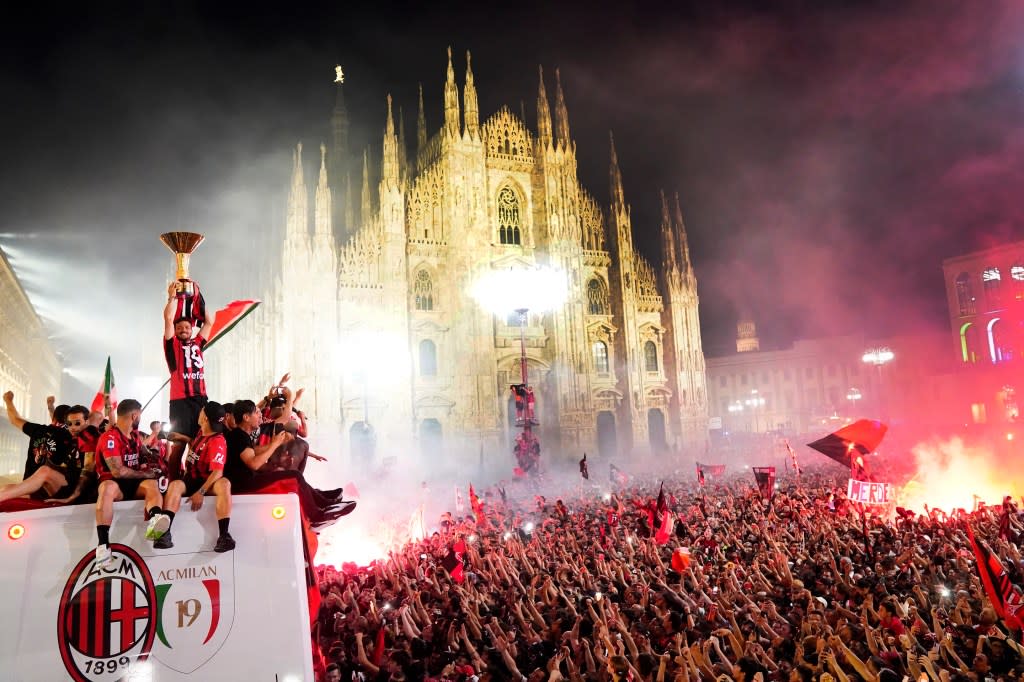
‘Sports is no longer a hobby for rich guys’
Amid a gold rush in European soccer, Cardinale pitches himself as a tenacious, entrepreneurial operator, pointing out he doesn’t have the funds of an oligarch or an oil sheik and he isn’t an aristocrat dilettante. For him AC Milan is neither a vanity project nor a sportswashing endeavor. He’s at heart an investor and a wheeler-dealer who brings a proven track record and a responsibility to his partners—who, one can assume, are expecting returns.
“Sports now is no longer a hobby for rich guys,” Cardinale tells Fortune in an interview. “Sports is a multibillion-dollar live event entertainment business, and you have to bring relationships and multidisciplinary skill sets across a range of activities to be able to get these things done.”
Cardinale says he reveres the history of the 98-year-old San Siro, but argues it shouldn’t impede progress. “It's time for Italy, and for Milan, to do what the Yankees did back in 2008,” Cardinale says. “Old Yankee Stadium had been around forever. Babe Ruth was there, Joe DiMaggio was there, Mickey Mantle was there, Roger Maris was there. It was iconic. But they realized that it’s time now for a new version of that.”
Just as in New York City, change-averse Milan fans (egged on by parts of the Italian media) have been slow to embrace the idea of leaving the San Siro—a modernist monument to Milan’s past glory. In 1989 and 1990, Milan was considered the best soccer team in the world, winning back-to-back European Cups while playing some of the most entertaining soccer fans had ever seen. Throughout its history, Milan cultivated a reputation for attracting the game’s biggest players—Marco Van Basten, Ricardo Kaka, Ronaldinho, David Beckham—giving it a patina of stardust that few other teams could rival.
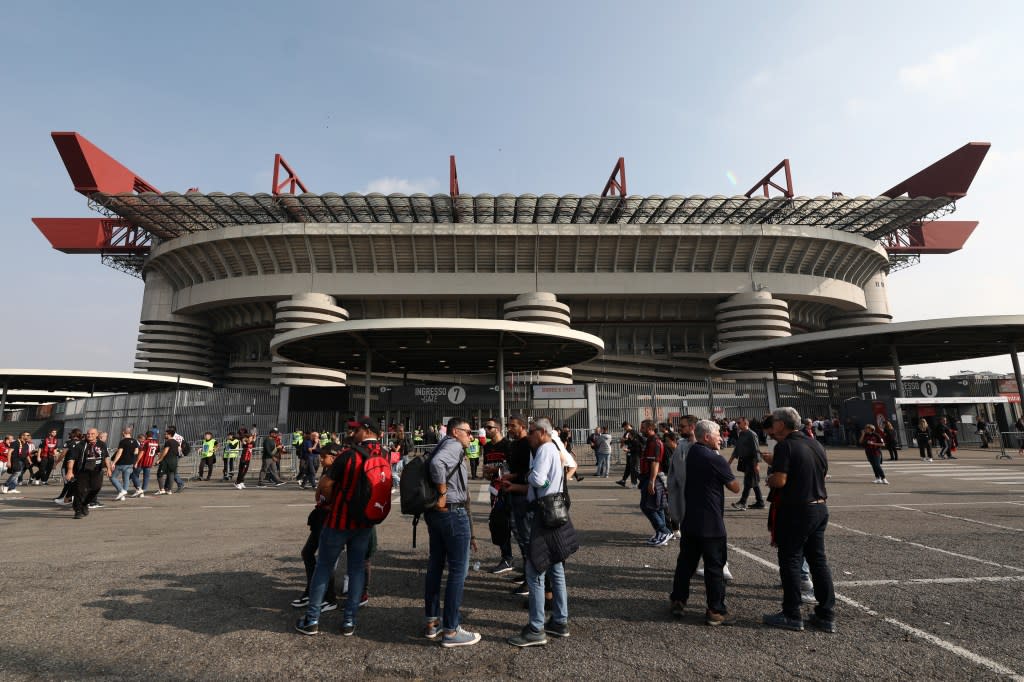
If AC Milan wants to build on its 2022 comeback to reclaim its perch atop European soccer, Cardinale argues, it needs an experienced pro with a track record of supercharging sporting giants by turning them into fabulously lucrative brands. But will his American playbook work in Italy?
Italy is beautiful and fickle, mesmerizing and exasperating, glorious and antiquated. Fans can pack a soccer stadium 70,000 strong with choreographed color displays, or, if they disapprove, can manifest their frustration through a torrential downpour of boos. Local governments can attract a billion dollars in foreign investments and then slow-walk approvals for those very projects. And the world of European soccer financing can be perilous—as Cardinale's firm is discovering now, with the announcement of an Italian financial police probe into RedBird's purchase of the team.
Building a Yankee Stadium in Milan, it turns out, might be even harder than getting it done in the Bronx.
The Harvard-educated number-cruncher in Milan
The son of Italian-Americans from Philadelphia’s affluent and picturesque Main Line suburbs, Cardinale has acknowledged that he wasn’t a “baseball man” before he got into the business side of the game. He rowed as an undergrad at Harvard, then was a Rhodes scholar at Oxford, before spending 20 years at Goldman Sachs, making a name for himself as the go-to dealmaker for sports and entertainment.
Goldman was where he helped develop the idea of a sports team as a media company, when he worked with Steinbrenner to create the Yankee Entertainment and Sports Network (which was eventually sold at a $3 billion valuation). He later helped secure funding for a $2.3 billion new stadium to replace the Yankees’ legendary home.
He hung his own shingle in 2014 with RedBird (a play on his last name), and at his own firm he has put together a slew of celebrity-laden deals, a Cardinale speciality. His focus on sports and entertainment has put him on first-name basis with figures ranging from the actors Ben Affleck and Matt Damon, whose movie production company he bankrolled, to the basketball player LeBron James, whose sports media company is owned by RedBird. The Rock tapped Cardinale to revive the Xtreme Football League, a defunct football league once owned by Vince McMahon. And last June, RedBird broke into the other European sport sweeping the U.S. when it bought a 24% stake in the Formula 1 team Alpine Racing alongside the movie stars Ryan Reynolds and Michael B. Jordan. He has brought the same penchant for working with celebrities to Milan, hiring the club’s tough-talking former star Zlatan Ibrahimovich as an advisor.
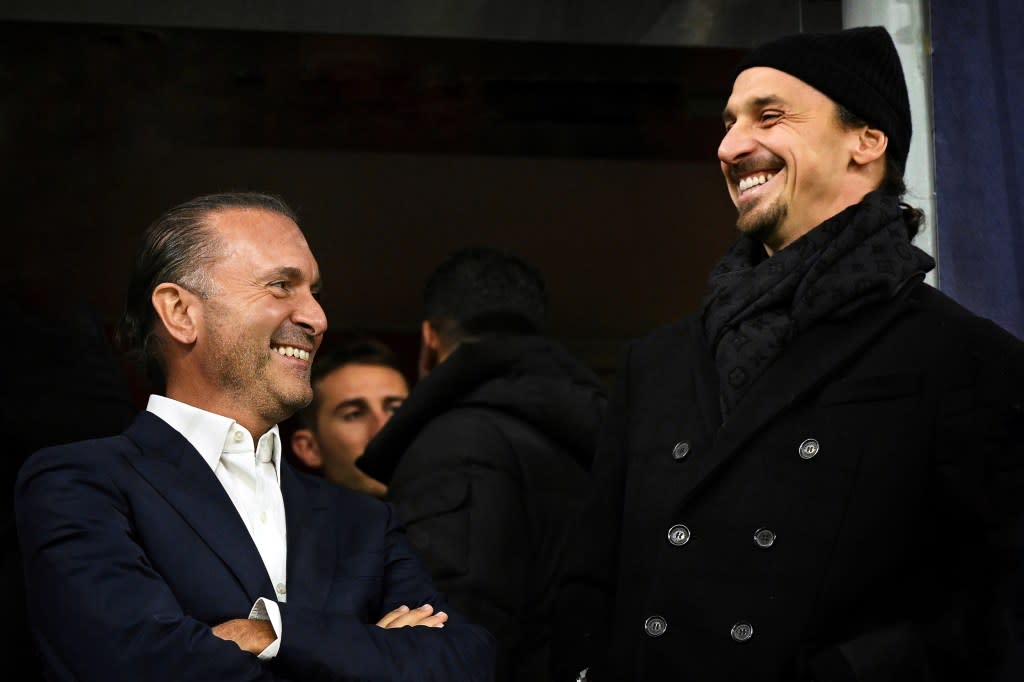
Cardinale’s profile is also rising in the worlds of entertainment and media. Last year he hired Jeff Zucker, the former president of CNN, to lead a $1 billion joint venture with the Abu Dhabi-based International Media Investments that currently controls the U.K. paper The Telegraph. There are also rumors that David Ellison’s Skydance Media, in which RedBird is the second-largest investor, is interested in buying Shari Redstone’s shares of Paramount.
Another name in Cardinale’s Rolodex is Billy Beane, the former baseball executive credited with inventing the data-driven approach that was famously profiled by the journalist Michael Lewis for Moneyball, which became a Brad Pitt movie of the same name. Beane has been business partners with Cardinale for several years, launching a $575 million SPAC in 2020 dedicated to investing in sports. And Beane is also a soccer nut who has encouraged Cardinale and other American friends to consider European soccer.
Cardinale sees what he does in the boardroom as analogous to what Beane did on the field: use sophisticated data analytics to find an edge against a better-funded opponent. “It's not a question of outspending the other guy,” Cardinale says. “It's a question of spending an incremental dollar of capital better than anyone else.”
An unlikely underdog
And indeed, despite its deep pockets in almost any other context—with about $10 billion in assets under management—RedBird can’t compete with the virtually endless supplies of money that have flowed into the European game over the past 20 years, upsetting many traditional hierarchies, including Milan’s place at the very top of the sport.
Russian oligarchs and Middle Eastern oil money have elevated formerly humbler clubs such as Manchester City (Abu Dhabi) and Paris Saint-Germain (Qatar) to top-dog status with exorbitant salaries for the world’s best players and investments in world-class infrastructure like stadiums and training centers. Man City now has more than double the revenues of Milan; PSG turns over exactly twice as much. Man City and PSG have spent as much, if not more, on players’ salaries than Cardinale did to acquire Milan. “You're never going to outspend that,” Cardinale tells Fortune.
In this super-rich company, Cardinale and RedBird are arguably the underdogs of European soccer—a strange label to affix to a plugged-in financier and a large American private equity firm. But the ace up Cardinale’s sleeve, he argues, is what separates him from other owners: Cardinale doesn’t have a few hundred million dollars burning a hole in his pocket. Nor is he the bored failson of a titan of industry sent to run the family sports team. And he’s nothing like the sovereign wealth funds of the oil-funded Arab kingdoms, for whom a sports team is a relatively cheap cultural asset that can offer some soft power or image-laundering.
The challenge ahead, Cardinale says, isn’t to have more money than his competitors—that’s impossible—it’s to have better ideas, and better execution. But it remains to be seen whether Cardinale can pull it off. Italian soccer is big business, but Europe is not the U.S., where money talks and everyone listens.
The best path to success, as Cardinale sees it, is a fancy new stadium. But few things in soccer are as difficult to execute than building a stadium in Italy. Being the first American to do so would be like striking soccer oil.
Each sports club a ‘Mini Disney’
A common Cardinale refrain is that sports teams “have to monetize the live event.” That means creating a game-day experience that’s such a good time and so additive to fans’ enjoyment that they can’t help but spend money. In an era where audiences have virtually limitless entertainment options at their fingertips, a stadium can no longer just be a venue to sit in a seat and watch a match.
“In the old days you could just throw a party and people would show up,” Cardinale says. “Today, there's a tremendous amount of competition for an individual's discretionary time. So if you're going to charge premium pricing in a live event, you're going to have to deliver a value proposition to that customer, in this case, the fan.”
In other words, even the most loyal fan has to be wooed—and these days it’s going to take more than a hot dog or, in Milan, a panino con la salamella. Fans are “very smart,” Cardinale says, and teams can’t just hike up prices for tickets and concessions and expect to get away with it.
Central to this thesis are the plush hospitality offerings that allow owners to cater to a team’s wealthiest fans and also attract corporate clients who reserve boxes for client schmoozing or to offer as executive perks. Premium seating is what makes the difference between clubs that make “a huge amount and those who make quite a small amount from their matchday income,” says Phil Carling, senior vice president of football at the sports marketing agency Octagon, who has worked in European soccer for 30 years.
By that measure, San Siro is drastically underperforming. (One fan review site, after describing the candy bars, peanuts, and sandwiches available at the stadium’s limited stalls, remarked “I can’t see how these small counters can serve 80,000 people when the stadium is sold out.”)
For comparison: Paris Saint-Germain’s stadium, with far more extensive concessions, brought in $165 million in 2022/2023 season, despite seating only 48,000 people. Meanwhile, last season Milan had an average attendance of almost 72,000 fans, and those gangbusters attendance numbers yielded just $79 million in stadium revenue. But the real blueprint is in the U.S.: In 2023, Yankee Stadium revenues were projected to be $341 million, according to Fitch Ratings.
The customer base for this kind of premium seating and suites will pay virtually anything for them, Carling says. The more creative a football club can get, the more money it can entice high rollers to spend. Manchester City sells access to the Tunnel Club, where fans can watch players’ prematch rituals via a one-way mirror. London-based Arsenal, which is owned by the Colorado sports magnate Stan Kroenke, has the exclusive “Diamond Club,” which includes meet and greets with the team’s coach and a five-course meal prepared by Michelin star chef Raymond Blanc. A new stadium can, and according to Cardinale should, also be an attractive concert venue—a lucrative business in itself, as blockbuster tours by Taylor Swift and Beyoncé showed last summer.
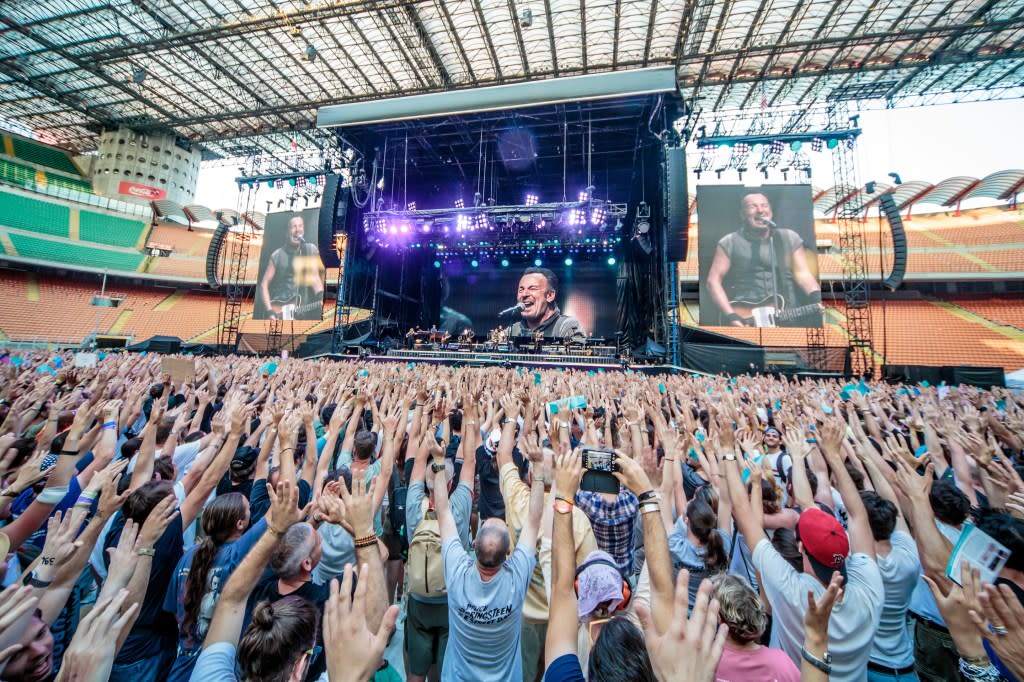
Not all teams own their own stadiums, Carling points out, but those that do “completely control the commercial model”—setting ticket prices, selling the naming rights to a sponsor, and building out luxurious VIP hospitality packages, among other revenue streams. San Siro is owned by the city of Milan, for which the club pays rent—while the new stadium would be entirely owned by the club, dramatically increasing its revenue potential.
Seen through this lens, Italian soccer’s dearth of team-owned soccer stadiums isn’t a shortcoming, but an opportunity. While Milan’s $79 million in stadium revenues is nothing to sniff at, the problem is that its fans are spending it at the wrong place, an arena it doesn't own and manage, meaning it’s leaving precious money on the table.
“One big macro thing in sports, in general, is you've had this massive escalation in these valuations in sports and none of the people and none of the infrastructure really has kept pace,” Cardinale says. “I mean, these are all now mini Disney's—live event entertainment companies.”
Change isn’t easy
San Siro might be a fixer-upper, but it still holds tremendous sentimental value for soccer fans in its own city and around the world. When Milan and crosstown rival FC Internazionale (Inter) met for a rare matchup in Europe’s Champions League last May, soccer commentators marveled at the atmosphere fans created in the stadium. A viral clip from CBS’s U.S. broadcast of the game showed one of its pundits, an Englishman, pausing his prematch analysis to survey the stadium-wide color displays the fans had put together, holding up colored boards to form massive images or spell out words. “Just look around,” he said. “I’m genuinely mind blown by the stadium.”
Many Milan fans have made peace with the fact the team will have to move to a new stadium to remain competitive with Europe’s top clubs. And even the club’s most conventional fans struggle to justify the practicalities of maintaining a century-old facility. A relatively old stadium even in a league already plagued by aging infrastructure, the 75,800-seat San Siro stadium is creaky, has few corporate boxes, and has been at various points labeled decrepit and obsolete by Milan chair Paolo Scaroni.
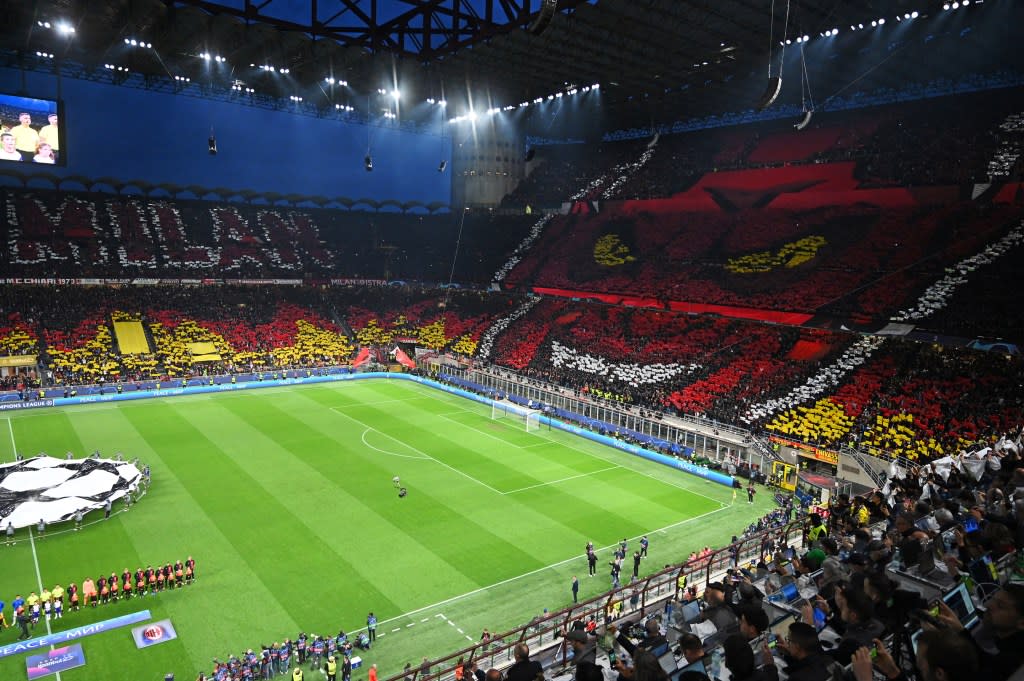
Still, when it comes to building anything new in Italy, “you’ve really got your work cut out for you,” says Carling, who has worked in Milan before, helping Inter with its finances. “Good luck with all of that: achieving the permissions, getting the local politicians on your side. It's a very bureaucratic country and that sets up its own challenges.”
Indeed, Italian bureaucracy is notoriously slow and sprawling, manned by aging and underpaid government workers, according to the Aspen Institute Italia. Business leaders and politicians alike have often claimed it stifles business, blaming it for everything from killing thermodynamic solar panels, to making it harder to hire doctors, to delaying the expenditure of €200 billion euros in EU pandemic relief funding. “The bureaucracy is killing Italy,” the Italian-American owner of the Florence-based ACF Fiorentina, Rocco Commisso, told Forbes in 2020, referring to his own efforts to build a soccer stadium.
After a couple of false starts, RedBird and AC Milan are now trying to build the stadium outside central Milan, in the town of San Donato, about seven miles and 25 minutes by car from downtown. In September, the club presented the city council of San Donato the architectural plans for the new stadium, which passed review in January. There has been some pushback in San Donato, too. A community group filed a petition with 2,000 signatures to the city council opposing the stadium on environmental and public safety grounds. “The stadium would hold 70,000 people in a town that has less than half as many citizens,” said Iris Balestri, a spokesperson for the community group. “The municipality isn’t ready to handle the presence of so many people in terms of cleanliness and urban sanitation.”
Historic Italian cities such as Milan, Rome, and Florence are particularly challenging for development because they’re subject to regulations meant to preserve their cultural heritage. (San Donato may not be in central Milan, but there’s an 889-year-old abbey about a mile away from the stadium’s proposed location.) The beauty and prominence of those cities is also what makes them so alluring to investors, says Simone Tosi, a sociology professor at the Università degli Studi di Milano-Bicocca, who studies the culture of soccer stadiums. Milan has fashion week, the Duomo, Leonardo Da Vinci’s Last Supper—which Tosi jokes is less of a tourist attraction than a Milan game—all of which make for an appeal that’s difficult to replicate. “The name of some very well-known Italian cities is able to give these sorts of investments another gear because of their glamor,” Tosi says.
Cardinale himself has remained upbeat about his stadium project in Milan, even as he acknowledges he’s “heard from others’ past experiences that it’s very tricky.” Still, he says, “I like our chances.”
With San Donato's recently completed review of Milan’s initial proposal, there is reason for optimism. But the plan must still go through many stages and approvals, likely to take between a year and a half and two years, before a final version can be presented to the town council for a vote.
In the meantime, to give itself a head start in advancing through the bureaucratic process, AC Milan bought a plot of land in San Donato that had already received preliminary zoning approvals for a much smaller sports complex called SportsLifeCity. “I wanted to know I had a viable, zonable option for the stadium,” Cardinale explains.
If the stadium doesn’t get built, it would be an uphill climb for Milan to compete in Europe, Cardinale admits. But he says he’s committed to AC Milan either way. “If the stadium doesn't happen,” he says, “we stay at San Siro.”
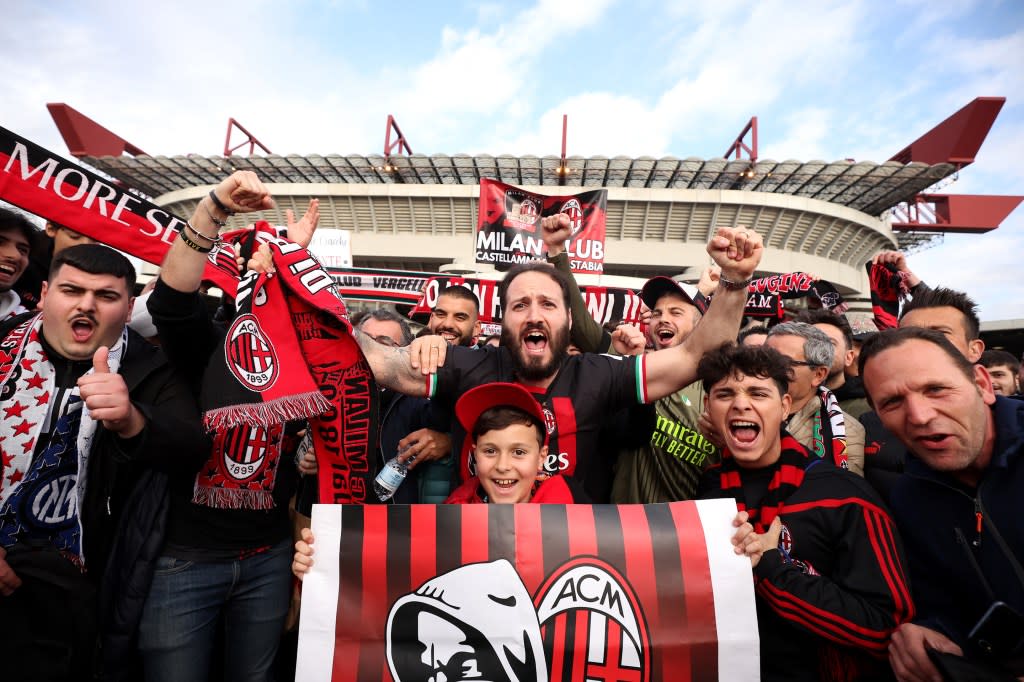
The American investors who have met their match in Italian soccer
If trying to build a new stadium turns out to be a massively expensive mistake for Cardinale and RedBird, he won’t be the first investor to be frustrated by Italian soccer. Several Italian-American owners already had the idea of returning to the motherland, as all-conquering, billionaire heroes from the New World. (In Italian a rich uncle is referred to as a zio d’America—the uncle from America.)
Building a team-owned soccer stadium in Italy has been the white whale for a slew of American owners—who see Italian soccer as a good business opportunity that could become even better with some added professionalism and corporatization, Cardinale says. “Those concepts are more familiar to American investors and I think that's what attracted them to Serie A,” Cardinale says, referring to the Italian soccer league. “They realize what the legacy is and the history here in some of these under-managed brands. They realized the potential to have a great investment on your hands, simply by professionalizing the ownership.”
AC Milan’s previous owners, American hedge fund Elliott Management, started that work. Elliott took Milan as collateral after Chinese businessman Yonghong Li (who had bought the club in 2016 for $788 million from the perma-tanned media impresario-turned-politician Silvio Berlusconi) failed to pay back a $32 million loan. After several years of bleeding red ink, Elliott, a specialist in fixing distressed businesses, managed to get Milan back on track, culminating in the 2022 championship. Stability achieved, Elliott sold the team to RedBird, who last year managed to turn a $6.6 million profit, its first since 2006.
But the deal is now under investigation by Italy’s financial police, the Guardia di Finanza, over allegations that Elliott, not RedBird, still controls the club. A spokesperson for RedBird denied that was the case. “The notion that RedBird doesn’t own and control AC Milan is just false and contradicts all the evidence and facts,” they told Fortune.
A spokesperson for Elliott echoed those sentiments. "The Elliott funds have had no equity interest in, or control over AC Milan,” they said.
Prosecutors called attention to a €560 million vendor loan that Elliott gave RedBird at an 8% interest to fund its acquisition of the club, according to documents viewed by Fortune. Cardinale told Italian newspaper Corriere della Sera he wanted the loan in order to keep working with Elliott. “Elliott did a great job,” he said. “No one put a gun to my temple.” Tangential to the whole affair is BlueSkye, a disgruntled minority owner with an indirect stake in the club that RedBird alleges “instigated” the investigation as part of its legal disputes with Elliott. BlueSkye declined to comment.
Elliott and RedBird are not alone in their struggles in Italy. James Pallotta, founder of the hedge fund Raptor Capital and owner of Rome’s AS Roma from 2011 to 2020, tried to build a stadium in the Eternal City for years, but progress faltered when real estate developers and city officials were caught up in a bribery scandal that led to multiple rounds of arrests. (The club wasn’t involved in any of the criminal activity.) Pallotta later sold the club for $700 million to another batch of American owners, the billionaire father-son duo Dan and Ryan Friedkin. The Friedkins since picked the project back up again in a different neighborhood in Rome. (Raptor Capital did not respond to a request for comment). In Florence, Rocco Commisso, the Italian-American billionaire who griped about Italy’s bureaucracy, had originally planned to tear down and rebuild Fiorentina’s aging architectural marvel of a stadium. After several rounds of high profile outrage from architectural guilds, academics, and others, Commisso settled for a stadium refurbishment and a brand new training facility. (ACF Fiorentina and AS Roma did not respond to a request for comment.)
Cardinale is cheering the Friedkins on, he says. “I hope Dan Friedkin is able to get a stadium done,” Cardinale said. “I’ll certainly do everything I can to support him because Italy needs more live event entertainment infrastructure.” Cardinale sees these efforts less as competition than as a tide that can lift all ships: “If I had my druthers, I would help every single other owner in Serie A build a stadium, because it's good for the ecosystem,” he says.
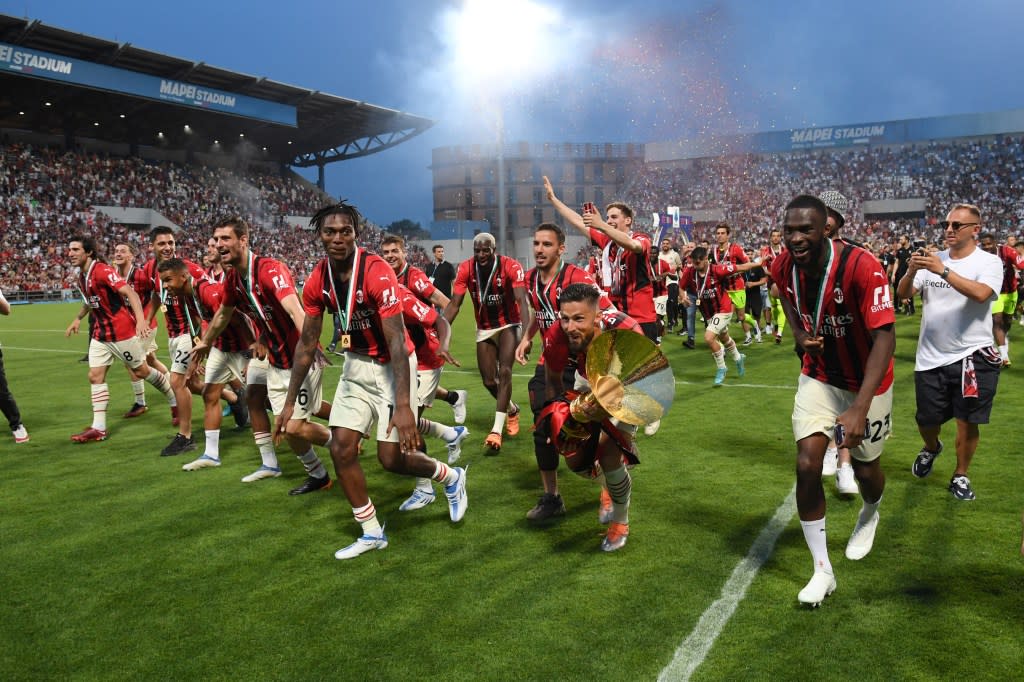
Next to fail or the first to succeed?
Cardinale says he’ll remain committed to the team whether or not the stadium is built—but without a new stadium and the money it would bring in, the future of AC Milan looks uncertain. The club risks languishing, lagging just behind Europe's greatest teams, with only the memories of the halcyon days when it was the envy of the soccer world.
For RedBird, the consequences of failing to build a stadium are less clear-cut. It could certainly puncture the aura of invincibility that surrounds one of the most visionary investors in sports and entertainment. Or maybe Cardinale’s peers would hardly notice, with RedBird just the latest in a litany of foreign investors to get fed up with Italian soccer and cash out. Or it could be seen as just the latest private equity or venture capital-funded moonshot to fall flat.
If Cardinale succeeds in Milan, on the other hand, it would be quite a victory. An American investor called to the siren song of Italy who didn’t end up shipwrecked in the stormy waters of its bureaucracy. It would also be a vindication of Cardinale’s brand of number-crunching corporatism: finding untapped potential where others only saw mediocrity, taking advantage of opportunities everyone else considered inadequacies, and doing it all with superior smarts, intuition, and a healthy dose of self-belief.
As his friend Billy Beane might remind him, that’s moneyball.
This story was originally featured on Fortune.com
